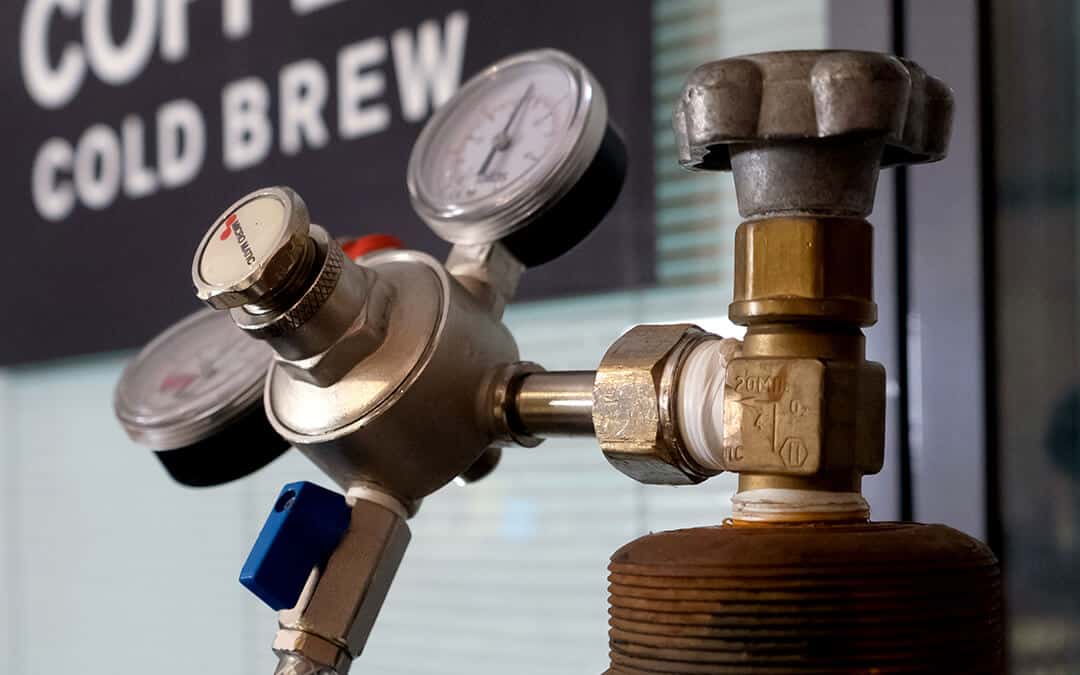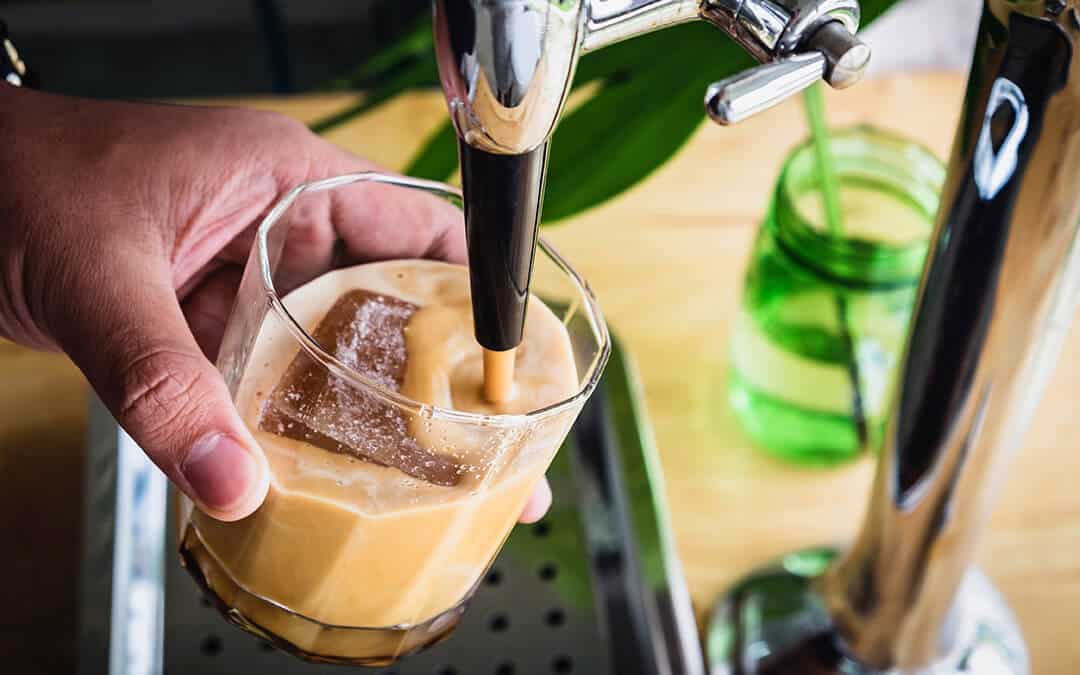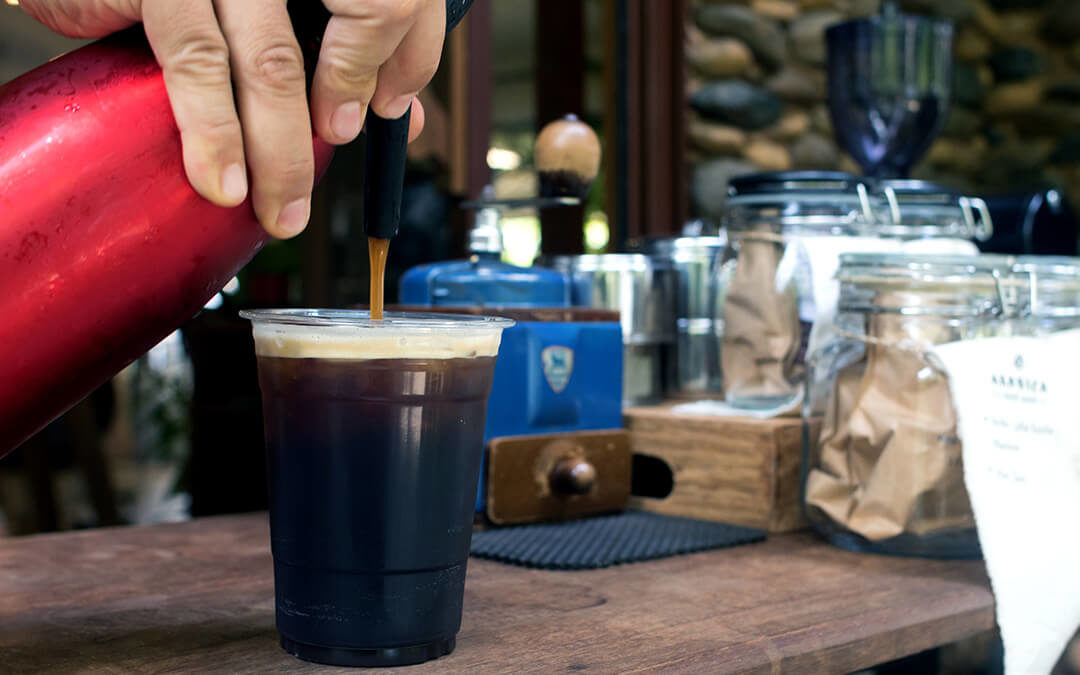Stout taps aren’t just for beer anymore; they’re for coffee. In fact, nitro taps have been around about as long as Irish pubs and breweries have—we just haven’t seen coffee in them. Nitro cold brew coffee didn’t start to appear on the food and beverage scene until 2013.
This blog will highlight some of the lesser-known and fascinating history behind nitro coffee, including some of the interesting science (and chemistry) behind its creation, the use of nitrogen, and more.
1. Where was Nitro Cold Brew First Created?
As in many things new and creative, you won’t be surprised to find out that nitro cold brew coffee began1 a few years ago in two pioneering cities in the South and Pacific Northwest: Portland, Oregon and Austin, Texas. Nate Armbrust was a food scientist in Portland who wanted to figure out how to get those tiny nitrogen bubbles into coffee without ruining coffee’s flavor. The result? Nitro coffee—a drink that would, just a few years later, in 2016, be picked up and put on the menu of that famous coffee chain, Starbucks.

2. Is Nitro Cold Brew More Caffeinated that Regular Cold Brew?
According to Matt Hartings2, a chemistry professor at American University, the answer is: it depends on how the brewer brews it. Are the grounds fine or coarse? For example, the coarse grounds result in more caffeine, as opposed to a fine or even a medium grind (less caffeine). And because brewers steep the coffee grounds longer in order to produce a cold brew, Hartings says there’s “the potential to get more caffeine out of your coffee than you would otherwise.” So, drinkers beware.
3. Why is Nitro Coffee So Creamy?
It’s all in the bubbles. According to Business Insider3, the tiny tap that dispenses the nitro coffee uses a “restrictor plate” to squeeze the nitrogen into the liquid, creating a drink with a smooth and frothy head (much like Guinness or other dark stouts and ales.) In fact, it’s the tiny bubbles that “make the drink feel thicker when you gulp it down.” Who knew bubbles could actually make a drink feel thicker and richer?

4. How is Nitro Coffee Stored?
You might be surprised to find out that nitro coffee is stored in a keg4, just like beer. Why? The keg keeps the coffee under pressure, and the pressure is important to the process. Coffee that’s stored in a keg is coffee that’s been brewed one of two ways: hot and then chilled, or brewed in cold water only and then placed in the keg until ready for consumption.
5. Why does Nitro Coffee Taste So Good?
According to Food Science5, researchers, scientists, and chemists are only just setting out to answer this question. For example, Heather Smyth who researches food science at the University of Queensland, Australia, notes that flavor components within coffee change during the normal, or traditional, (hot) brewing process: citrus notes in the coffee may disappear “while chocolate and black currant notes become apparent as the coffee cools.” But what happens in the nitro coffee cold brew process? To date, little to no research has been published to explore exactly how infusing liquid nitrogen into coffee changes its molecular structure. We’ll just have to wait and see, and in the meantime, drink a cold cup of nitro coffee.
To learn more about CalOx’s liquid nitrogen products for restaurants and cafes, contact us today.
1. https://www.wbur.org/hereandnow/2019/07/08/what-is-nitro-cold-brew-coffee
2. https://www.wbur.org/hereandnow/2019/07/08/what-is-nitro-cold-brew-coffee
3. https://www.businessinsider.com/why-cold-brew-coffee-nitrogen-bubbles-tastes-better-2015-8
